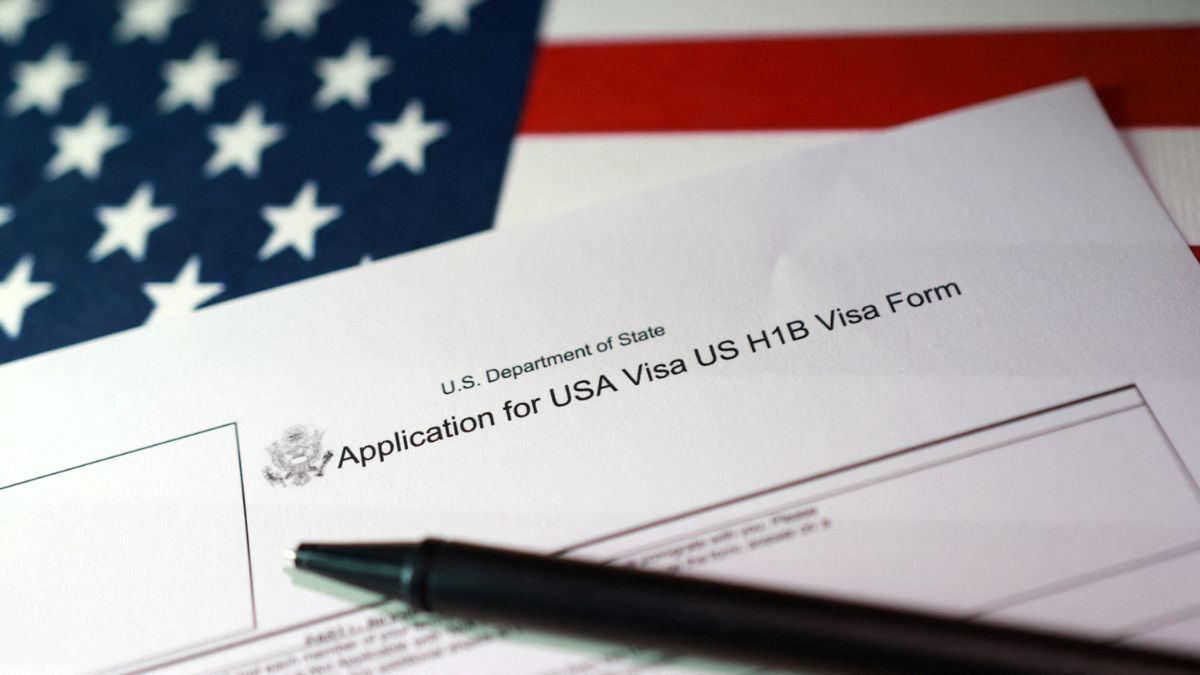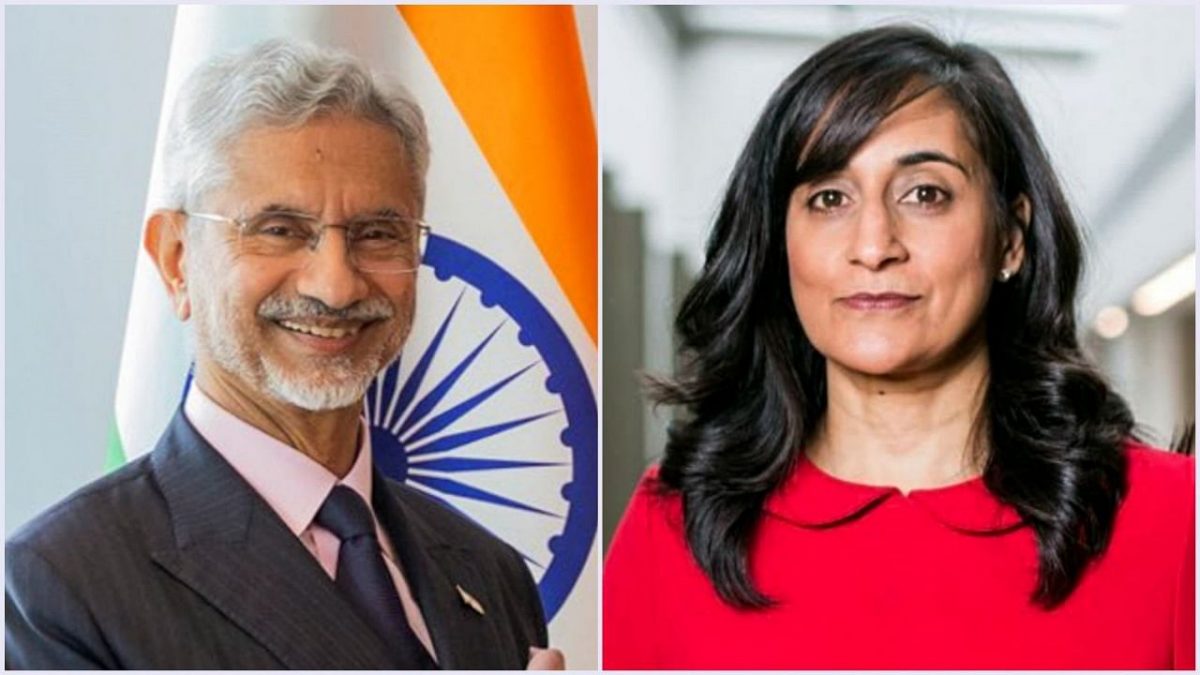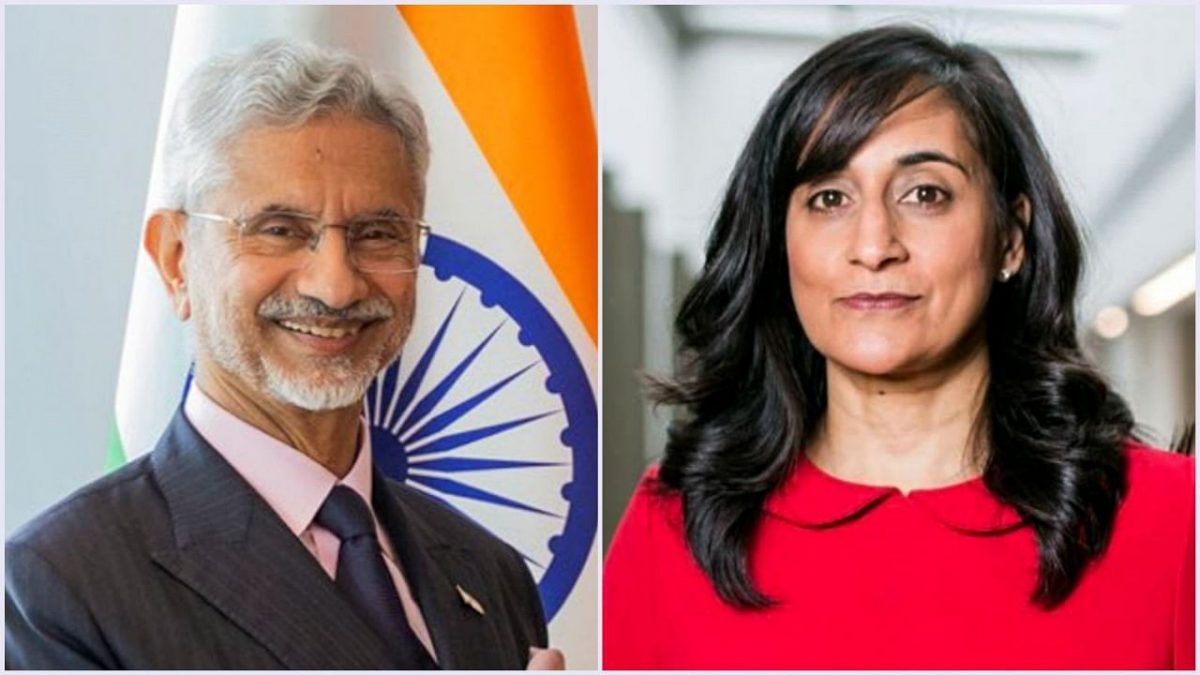The Trump administration’s plan to impose a $100,000 annual fee on new H-1B visa applications is expected to alter the employment for skilled foreign workers in the United States.
This unprecedented hike, announced last week, could lead to a sharp drop in foreign work authorisations and hit Indian professionals the hardest, as they form the majority of H-1B visa holders.
Economists at JPMorgan Chase & Co., Abiel Reinhart and Michael Feroli, estimate that the proposed policy would result in as many as 5,500 fewer work permits being approved every month.
Their assessment is based on the number of visas processed abroad during the last financial year, which are considered most vulnerable to the dramatic cost increase, reported Bloomberg.
The US government argues that the measure is aimed at encouraging domestic hiring and reducing reliance on foreign labour.
However, industry groups, business leaders, and analysts have warned that the fallout could be severe, especially for sectors like technology and finance that depend on international talent.
A closer look at H-1B visa data
The H-1B visa programme allows US companies to employ foreign workers in specialised roles, many of which require advanced skills in technology, engineering, or scientific fields.
According to government figures for FY2024, there were 141,000 petitions approved for new employment, of which around 65,000 were processed through US consulates abroad.
These cases are most at risk under the new rule, as companies would need to pay the additional $100,000 fee for each fresh application.
Data shows that computer-related occupations accounted for nearly two-thirds of all approvals, highlighting the programme’s central role in supporting the US technology sector.
Approximately half of the total visas were linked to professional, scientific, and technical services, a category that includes a wide range of advanced roles in research, IT consulting, and specialized engineering services.
Indian nationals dominate the H-1B landscape, representing 70 to 71 per cent of all approvals last year.
China was the second-largest source of applicants, but at a much lower 11.7 per cent.
This overwhelming representation makes Indian professionals the most exposed group to the proposed changes.
The number of monthly job losses
The estimate by JPMorgan’s economists suggests that 5,500 foreign work authorizations could be lost each month, equivalent to 66,000 jobs annually.
These numbers are based on the assumption that companies will scale back or halt their overseas sponsorships due to the higher cost.
In a more severe scenario, Loujaina Abdelwahed, senior economist at Revelio Labs, warned that the impact might be even greater.
“The dramatic increase in fees is effectively equivalent to dismantling the H-1B system, potentially eliminating up to 140,000 new jobs per year — about 10,000 per month — in US companies that depend on skilled foreign talent,” she said.
The fee hike comes at a time when the US labour market is already slowing. Employers have added an average of just 29,000 payrolls per month over the past three months, a sharp deceleration from previous levels.
Federal Reserve Chair Jerome Powell recently described the situation as a “marked slowing” in both the supply and demand for workers, citing reduced immigration as a contributing factor.
How mid-level roles are most at risk
JPMorgan’s report notes that the sharp fee increase will likely change hiring patterns. Employers may reserve H-1B sponsorships only for senior or very high-paying positions, as the cost of bringing in mid-level or early-career professionals becomes prohibitive.
For Indian engineers, software developers, and consultants — who are frequently employed in mid-tier roles — this represents a direct threat to career opportunities in the US.
It could also disrupt project delivery for major IT and consulting firms, many of which rely on a steady stream of skilled workers to manage contracts and clients.
The consequences may extend beyond individual workers. Higher fees could lead to longer recruitment cycles as companies reassess budgets and visa strategies, ultimately increasing operational costs.
In some cases, employers may opt to relocate jobs overseas rather than pay the steep new fees, a shift that could redirect economic benefits away from the U.S. and into other countries.
US companies under congressional scrutiny
The announcement of the fee hike has coincided with growing political pressure on major corporations over their use of foreign labour.
Lawmakers from both parties have raised questions about why companies continue to sponsor thousands of foreign workers while simultaneously laying off American employees.
According to a report in the Wall Street Journal, Republican Senator Chuck Grassley and Democratic Senator Dick Durbin have written to several high-profile companies seeking detailed information about their hiring practices.
The letters request data on the number of H-1B workers employed, the wages paid to them, and whether American workers have been displaced as a result.
“With all of the homegrown American talent relegated to the sidelines, we find it hard to believe that Amazon cannot find qualified American tech workers to fill these positions,” the senators wrote to Amazon CEO Andy Jassy.
The companies that received these inquiries include Apple, Amazon, Deloitte, Alphabet’s Google, Meta, Microsoft, Walmart, Cognizant Technology Solutions, and Tata Consultancy Services (TCS).
These firms are among the largest sponsors of H-1B visas and play leading roles in industries such as cloud computing, artificial intelligence, and enterprise technology.
In the first half of 2025 alone, Amazon and its cloud division, AWS, secured approval for more than 12,000 H-1B visas, while Microsoft and Meta each received over 5,000 approvals.
Fee hike defended by Trump administration
The U.S. government has defended the $100,000 fee as a tool to promote domestic hiring and prioritise higher-skilled roles. Alongside the fee, officials have proposed changes to the H-1B selection process that would give preference to applicants with advanced qualifications and higher salaries.
Proponents argue that these reforms will ensure that visas go to the most qualified individuals while reducing dependence on cheaper foreign labour.
They believe this could open up opportunities for American workers, particularly in the technology sector.
However, business leaders and economists have pushed back against this narrative. Jamie Dimon, CEO of JPMorgan Chase, has pointed out the importance of access to global talent, reportedly stating that the sudden fee increase “came out of the blue.”
Dimon and others warn that restricting international hiring could hurt US competitiveness in industries that rely on cutting-edge skills, particularly as companies race to develop advancements in artificial intelligence and other emerging fields.
As US companies grapple with higher visa costs, they may choose to move more roles offshore to countries where labour is more affordable. Canada, the UK, and Australia are expected to be key beneficiaries, as their immigration policies are seen as more welcoming to skilled professionals.
This shift could gradually erode the US’ position as the leading destination for top global talent.
With inputs from agencies


)

)
)
)
)
)
)
)
)



